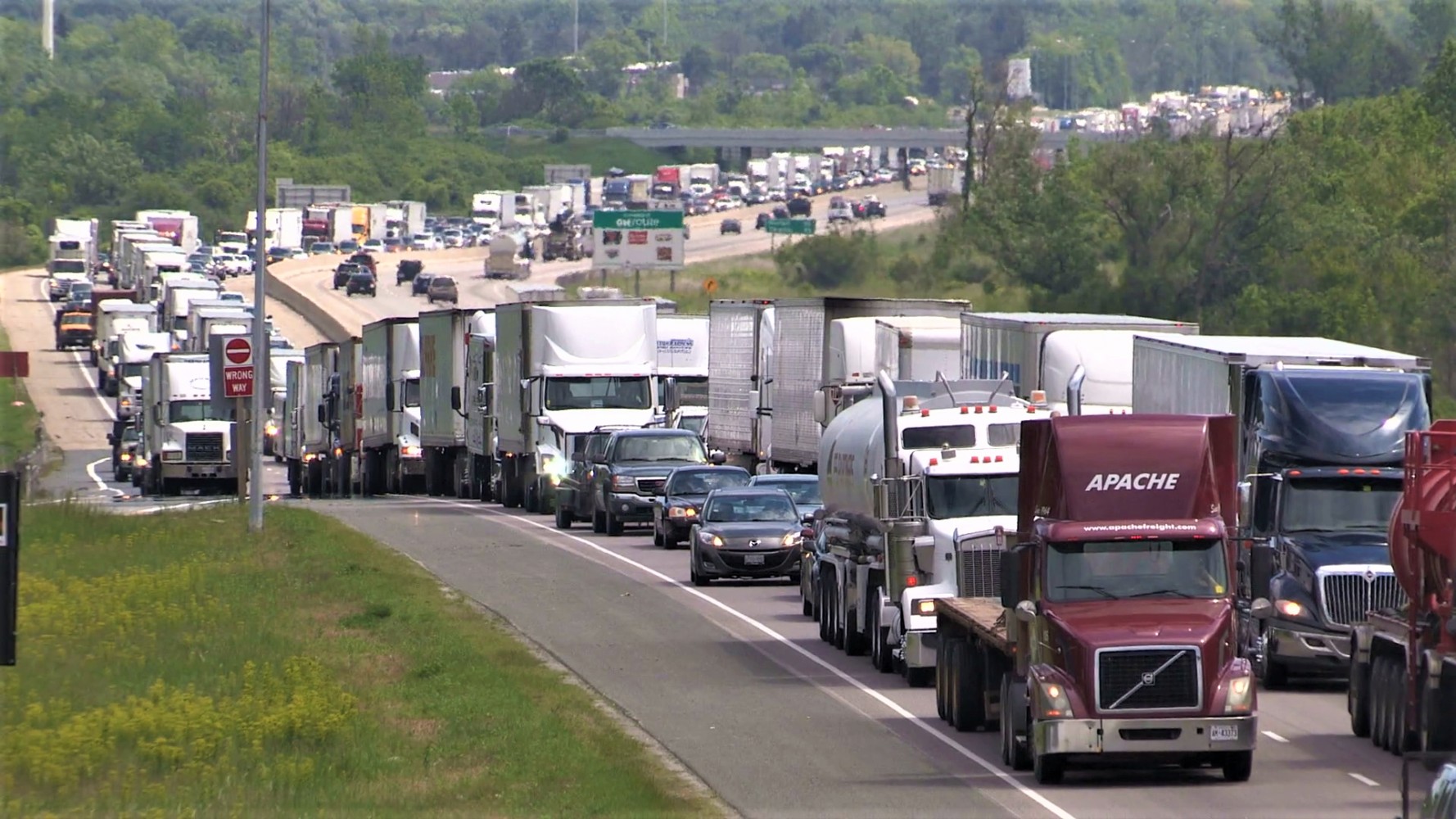
Part 1: The GTA West Highway is a reckoning on what the rest of Peel wants to be
Like most decisions that profoundly affect the way humans live, land use is seldom approached as a life altering exercise.
At the end of February, Mississauga Council voted unanimously to oppose the construction of the GTA West Highway. Two weeks later, a vote at the Region of Peel returned the same result.
It was a historic shift in a suburban region that since its existence has been built around highways.
It’s now at a watershed. All that’s at stake is its very future.
Does Peel want to be a cosmopolitan centre, marked by complete communities and walkable burroughs that attract some of the most highly skilled residents and employers in the world, or does it want to draw more warehousing and trucking operations that line industrial areas in between sprawling subdivisions served by six-lane thoroughfares hemmed in by the nearest 400-series highway?
Will the rest of Peel's growth be more of the same?
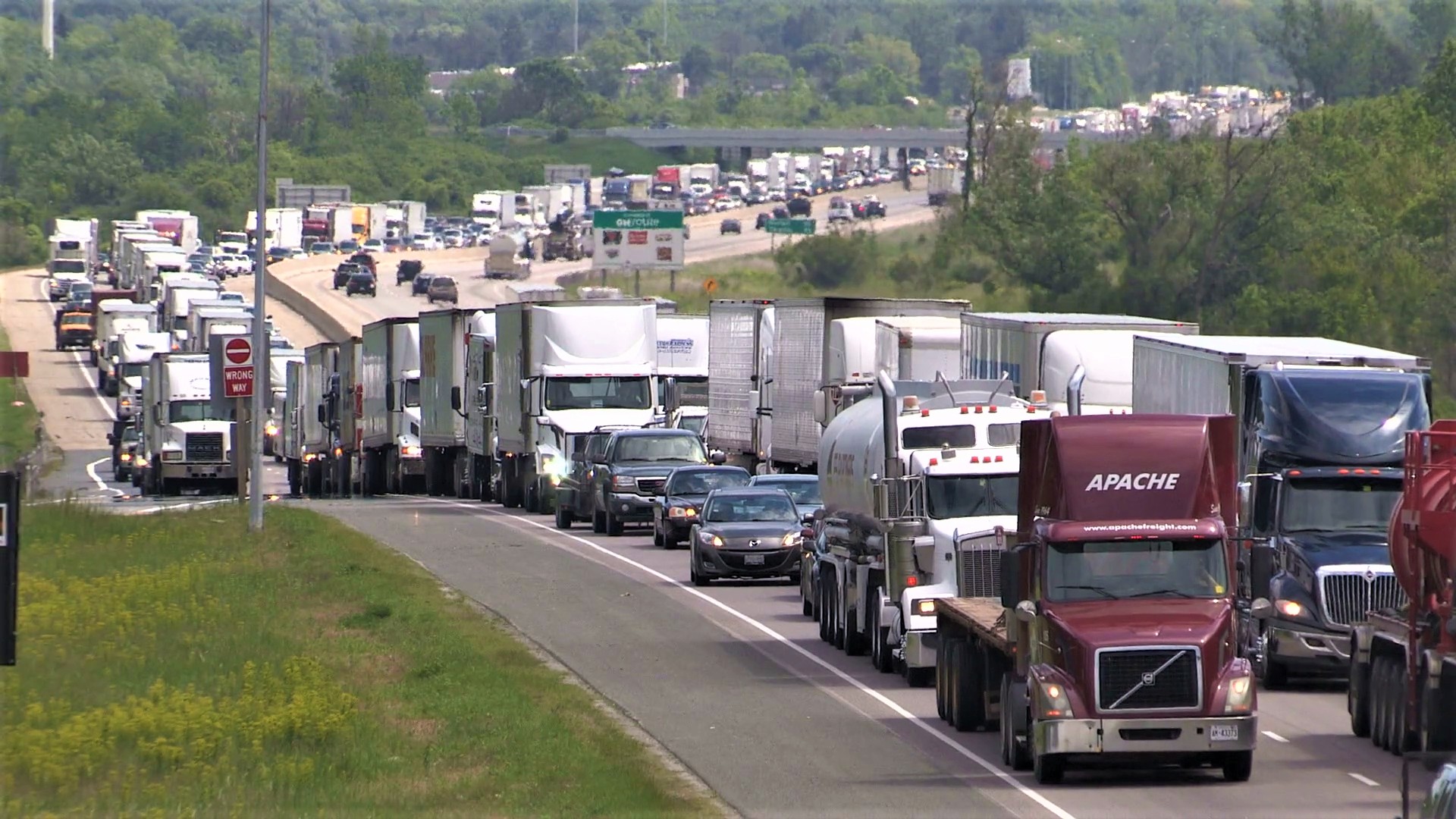
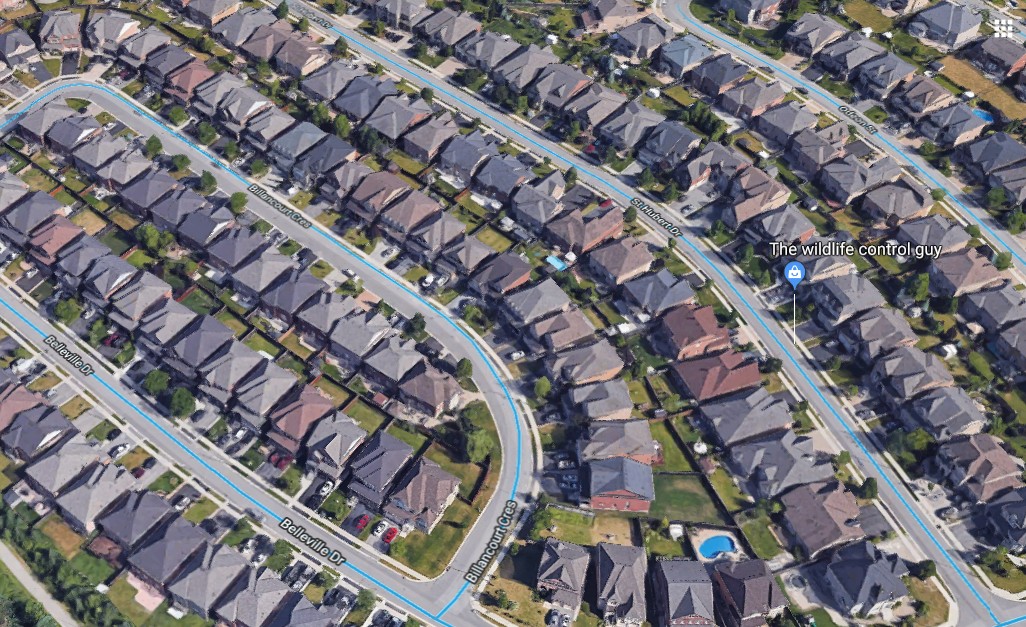
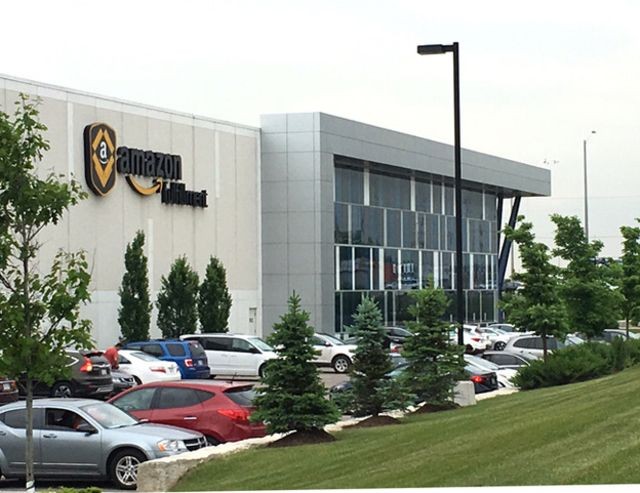
The decisions by a growing list of municipalities now opposed to the GTA West Highway have pushed some of the plan’s supporters into the public eye, as they battle to save the 400-series highway.
The route, which will cut through northwest Brampton and south Caledon, was scrapped by the Liberals in 2018, after an expert panel found it would save just 30 seconds on travel times in the region and cause significant environmental damage. The highway plan was also a direct contradiction of the Province’s commitment to higher order transit investments in support of complete communities and an end to sprawl-inducing planning.
Fresh from winning a landslide 2018 election victory, Doug Ford and his strong PC majority government restarted the route’s environmental assessment. Last summer, it announced this process would be expedited so the highway could be delivered significantly faster by reducing vital study periods. Ford and his government have failed to explain how the environmental assessment process will be sped up, whether crucial research into watershed and air quality impacts along with ecosystem studies and effects on local species will be properly completed before any construction activity begins.
A group of Caledon council members including Jennifer Innis and Mayor Allan Thompson has worked feverishly in support of the growth the highway represents: warehouses, sprawling suburban subdivisions and low slung retail.
There are no dynamic, urban landmarks in this post-war vision, no high-rise office towers housing skilled professionals from around the world, no awe-inspiring arts and cultural venues. Even existing natural features will be paved over for the sprawling subdivisions.
The 413 GTA West Highway is the lifeline to this spread out suburban oasis.
But public pressure is now mounting against it. And even the PCs, who previously seemed more than willing to push the developer-driven highway agenda, have started to distance themselves from the project. In two separate comments last month, the Government House Leader, Paul Calandra, lowered the enthusiasm of his government’s previous stance on the highway.
“There is still a tremendous amount of work that needs to be done here, some consultations of course that have to happen with our partners in the area and (the) environmental assessment,” he said in the legislature in March. “Once we accomplish all of the consultations, if it makes sense for the highway to proceed, it will, if it doesn’t, we won't.”
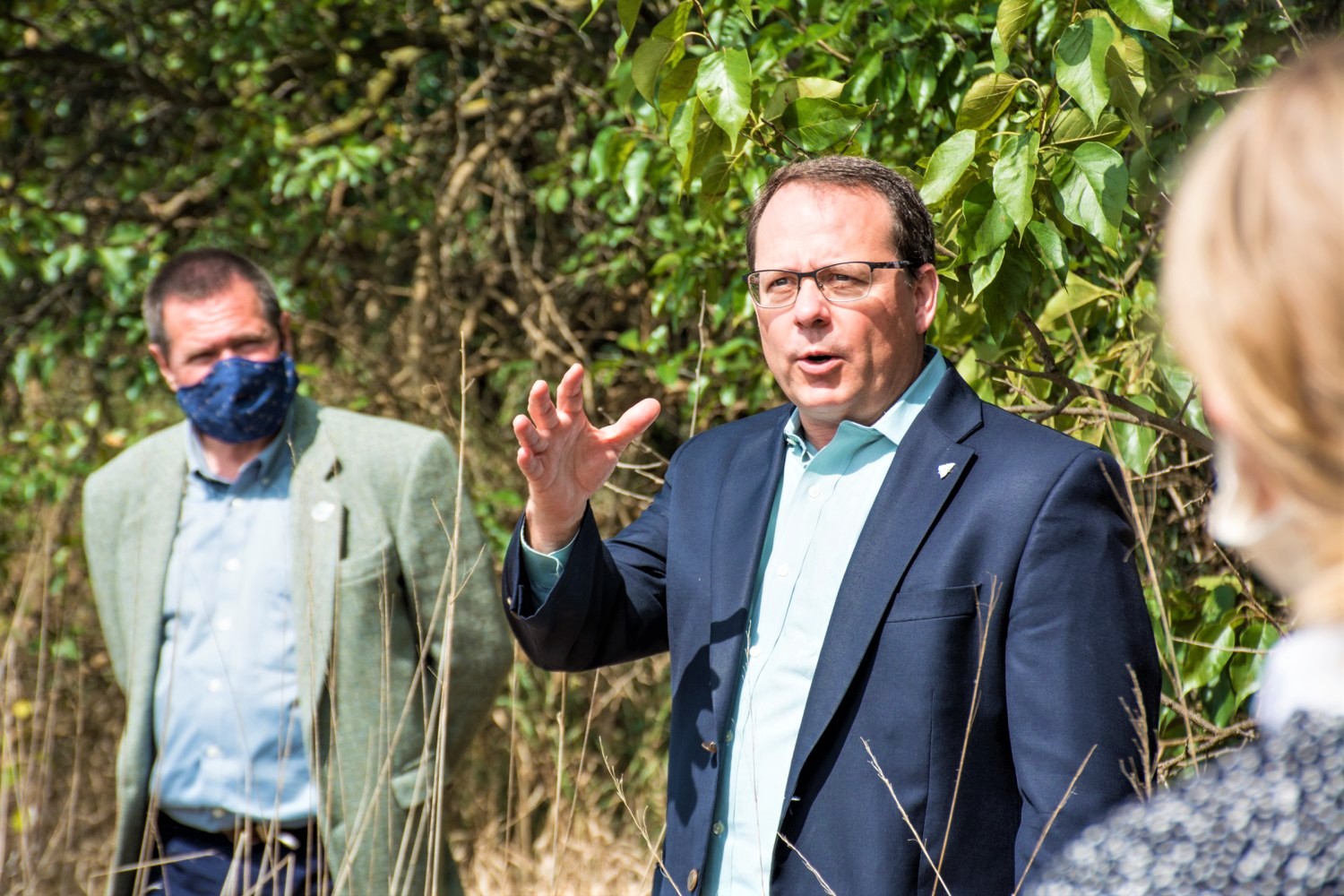
In response to questions from Green MPP Mike Schreiner in the legislature, the Province has cooled its enthusiasm for the GTA West Highway
While the PC leadership suddenly seems to be taking notice of the significant and widespread public backlash against the 413 Highway, ahead of next year’s provincial election, some groups have remained committed to their support for the massive transportation corridor.
Local leaders at the Brampton Board of Trade have shared their support for the GTA West — describing it as a key for the local logistics industry — while a major developer and landowners have also been transparent in their support.
Oddly, the local board of trade has been recognized as a key stakeholder in Brampton’s 2040 Vision, a master plan document adopted by the current council as the official planning principle of the city.
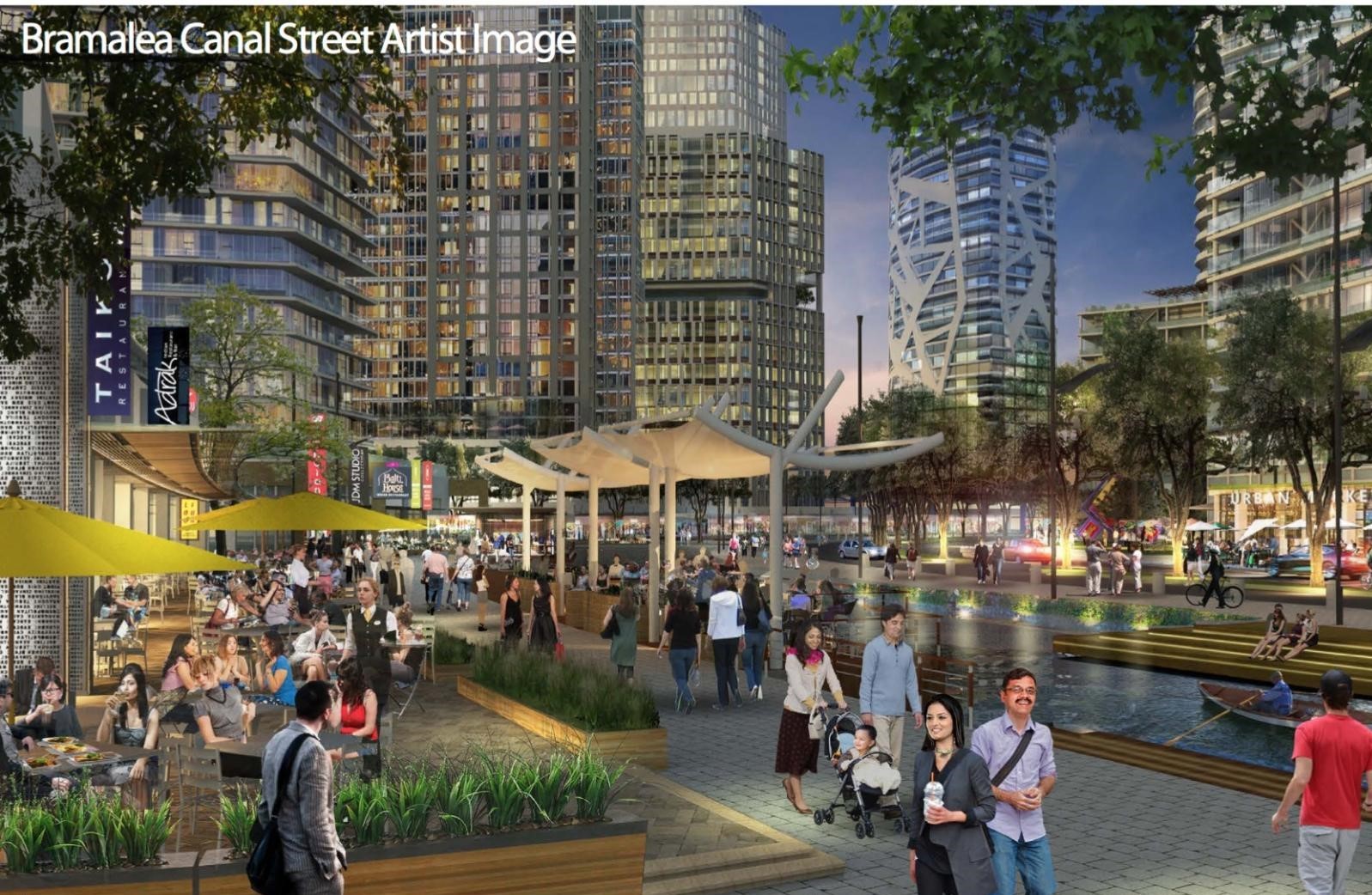
Brampton's 2040 Vision replaces highways and warehouses with rich culture and highrise office towers
It rejects warehouses and sprawling subdivisions, car-dominated planning and the isolating built form that has divided the city’s neighbourhoods, and people, from each other.
The document was created with the input of more than 11,000 Brampton residents who provided comments and ideas incorporated into the 2040 Vision.
The resuscitation of the GTA West Highway stands in the way.
Which direction will Peel choose as at least a million new residents arrive over the next 25 years?
A decision around the future of the highway project could soon be wrenched from the hands of the provincial government, whether it is enthusiastic about the route or not.
Following a request by Environmental Defence and climate law firm Ecojustice, the federal government is considering an appeal to upload the provincial environmental assessment process.
If Ottawa decides federal issues, including protected species and carbon emissions, are going to be impacted by the highway, it could seize control from the Province. The plan could then be scrapped altogether.
But that’s a big if.
Its future could be dictated by local interests.
Unwilling to see Queen’s Park lose control of the project, Mississauga—Lakeshore PC MPP Rudy Cuzzetto has been forceful in his support of the route, which will not bring any tangible benefits to residents in his riding. “I do not believe the GTA West Corridor should be cancelled,” he said in an email. The Pointer reached out to all PC MPPs in Brampton and Mississauga, but only Cuzzetto replied.
One major GTA developer has been more vocal than Cuzzetto’s colleagues. Orlando Corporation, a company that leases out employment lands, has been outspoken in its defence of the highway plan, which plays a key role in its lucrative business model.
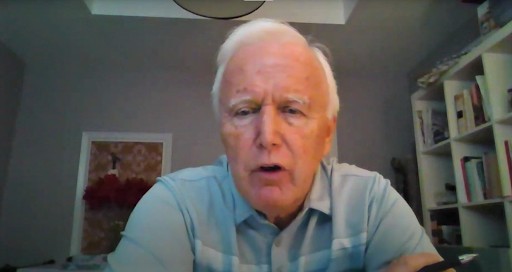
Phil King, president of Orlando Corporation, told councillors the highway was necessary to open up new employment lands.
“Residential growth is not going to be significantly impacted by the construction of this highway, it’s going to occur regardless, but employment growth surely is,” Phil King, president, Orlando Corporation, told councillors in March. “The 413 is also an essential piece of infrastructure to open up new employment areas along its route, which is badly needed… a consequence of not building 413 will be that Peel and the GTA will not be able to meet its employment targets as it does not have enough land.”
According to its website, Orlando Corporation is “Canada’s largest privately-owned industrial real estate developer and landlord”.
The company operates on a development model that lives and dies by the highway. Listed in Orlando’s portfolio are industrial employment facilities like warehouses, retail spaces in the form of car-oriented plazas and a portion of office space. In many directory listings, Orlando emphasizes the amenity that provincially funded and constructed highways bring to its privately owned business. The company even names many of its premises after the highways they are built beside.
The model attracts low-slung retail and logistics operations, plazas, manufacturing and fulfilment centres. It gobbles up land and creates very little high-income employment.
It’s the opposite of urban, dense, dynamic vertical growth around complete community concepts.
The old suburban-style commercial offerings are something many companies are moving away from, opting for locales where employees live in walkable areas served by transit, not hollow industrial buildings surrounded by gaping boulevards.
In 2018, announcing a plan to vacate its suburban Mississauga headquarters and move to Toronto, computing giant Microsoft explicitly cited transit connectivity as an issue. Instead of expecting workers to tumble out of their personal vehicles in the morning, brandishing the drive-through coffee they grabbed on the way to work, Microsoft wanted to inspire dynamism.
It was a huge blow. Highly skilled tech-sector workers left Mississauga for its big-city neighbour, taking their six-figure salaries with them.
By locating in downtown Toronto, served by a regional rail network that reaches as far as Barrie, Oshawa and Kitchener, the company can pursue employees across the GTA without worrying about congestion. The walkability of downtown and the surrounding features allow staff to engage with each other and their environment in a much more human way than the isolating confines of a corporate campus housed in a far-off corner next to a highway.
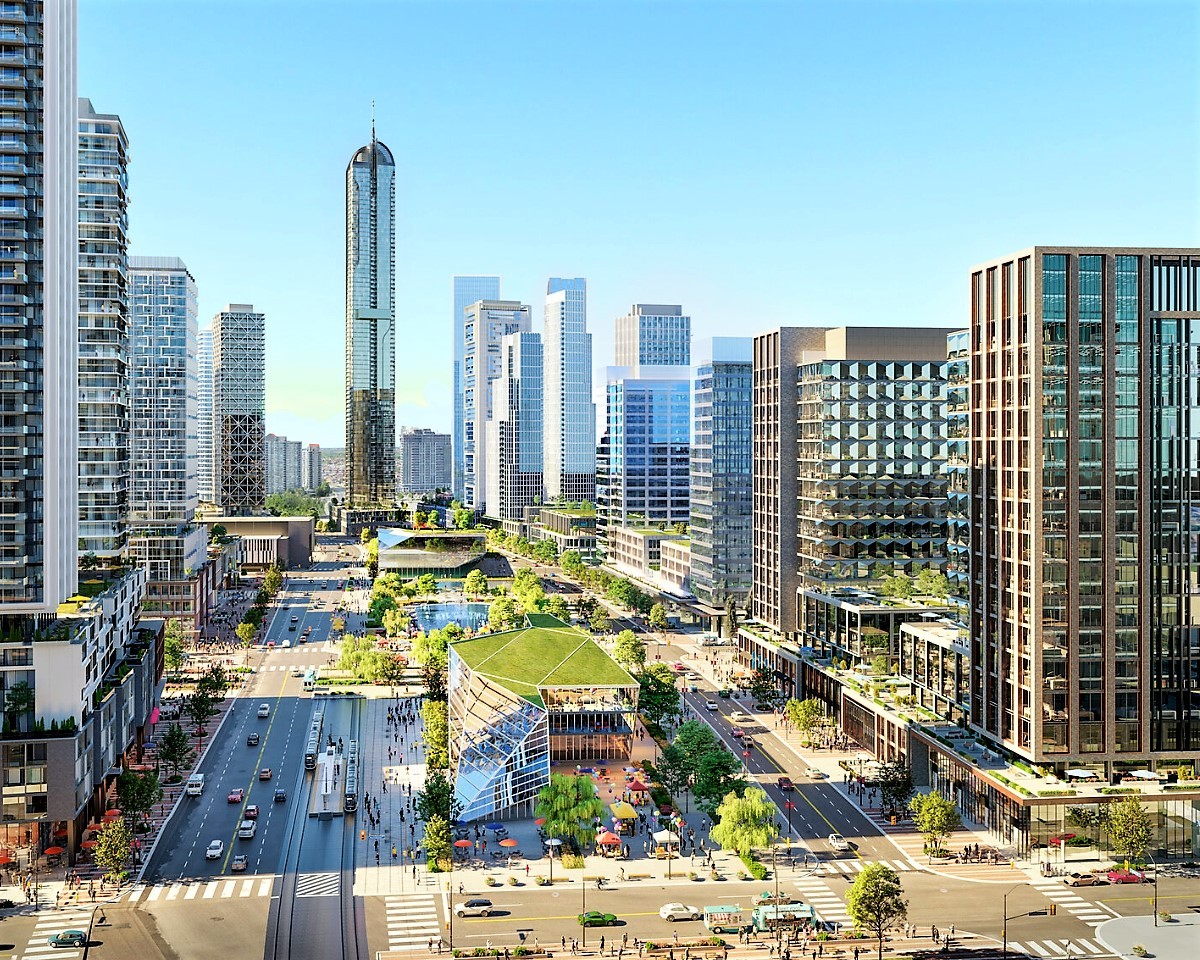
A rendering of the planned Oxford Properties redevelopment of downtown Mississauga
Mississauga got the message and is on its way to transforming its own downtown area from a formerly sleepy car-dominated enclave into a dynamic, walkable city centre.
But it’s not there yet.
“Microsoft says moving to a new facility at 81 Bay Street (CIBC SQUARE) will enable the company to better serve its customers, collaborate with its technology partners and to attract top talent to a central location, one well served by transit and more accessible to universities and innovative new tech start-ups,” a media release issued on behalf of the company explained.
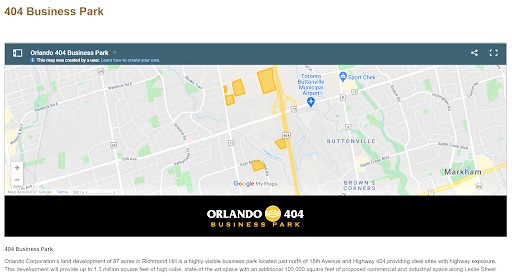
Orlando names some of its business parks after highways, highlighting their importance to its development model.
“Clearly, without the highway, the ability to grow employment lands in Caledon will be restricted,” King continued, addressing council members. “If there’s no highway put in place, just the capacity of the existing road network will not be able to accommodate the truck traffic. As you rightly noted, Highway 50 is already at capacity.”
The presentation, from a company unafraid of association with an increasingly politically unpopular and environmentally destructive project, relies on a business-as-usual scenario. It assumes Caledon will want to follow Brampton’s expansion, handing over swathes of land to warehousing and logistics companies, with large commercial trucks dominating local streets.
Following the same path means leaders and residents are okay with two congested commutes per day in their future, forever. It assumes they will be happy to travel to neighbouring cities for nightlife or a range of cultural and artistic experiences. It is built on the idea that the Brampton and Caledon residents stuck behind the wheel for hours each day, divided up in little boxes that represent yesterday’s planning, are happy with the status quo.
This highway-centric thinking for job creation often yields fewer opportunities per hectare in warehouses or trucking operations, compared to offices served by transit where a range of jobs in related sectors and innovative operations can be located.
These highway-corridor jobs, including warehouses like Amazon’s, offer poorly paid work (Amazon’s Canadian warehouse workers make about $16.50 on average or about $34,000 annually) compared to other types of skilled employment attracted by a completely different type of land use model. As a campaign for paid sick days sponsored by Peel Public Health has demonstrated, warehouse work leaves much to be desired in terms of employment rights. Highways attract fewer jobs and, those they do bring, are often poorly paid.
Another one will make Brampton and Caledon a destination for more blue-collar workers, a mismatch with the current demographics, which show Brampton has one of the best-educated populations in the country, thanks largely to the highly skilled immigrants it attracts.
Data from Statistics Canada show this disconnect in action, as more and more new arrivals treat Peel as a stepping stone, not a destination. The massive levels of annual immigration to the region hide the truth that many of its new residents don’t stay long. Between 2018 and 2019, almost 20,000 people moved away from Peel to other parts of Ontario. The area remains a magnet for newcomers, but many are not staying long. In Brampton, largely because of the lack of skilled employment options in the city, about two-thirds of employees are forced to leave the city every day for their jobs (the pandemic has allowed many to work from home).
Mississauga learned the lessons of low-skilled employment the hard way and now, decades after a big industrial expansion around its highways and airport, a concerted effort is well underway to convert the very warehouses a highway can spawn into state-of-the-art film studios. Its city centre now features a forest of highrises and areas along its lakeshore and other parts of the city are being planned for dynamic future urban growth.
With its status as the largest undeveloped portion of Peel Region, Caledon can choose to replicate the mistakes Mississauga and Brampton are now grappling with, or it can try to skip a step. It can court the same highway centric jobs in logistics and trucking the 413 will bring, or it can concentrate on developing dynamic and livable communities from the word go.
Large parts of Bolton have already followed the warehousing and industrial route and this has created a buffer of land that can not be used for complete communities. The fear is decision makers will continue the domino planning around these massive warehouses to guarantee much of Caledon can’t be planned more progressively.
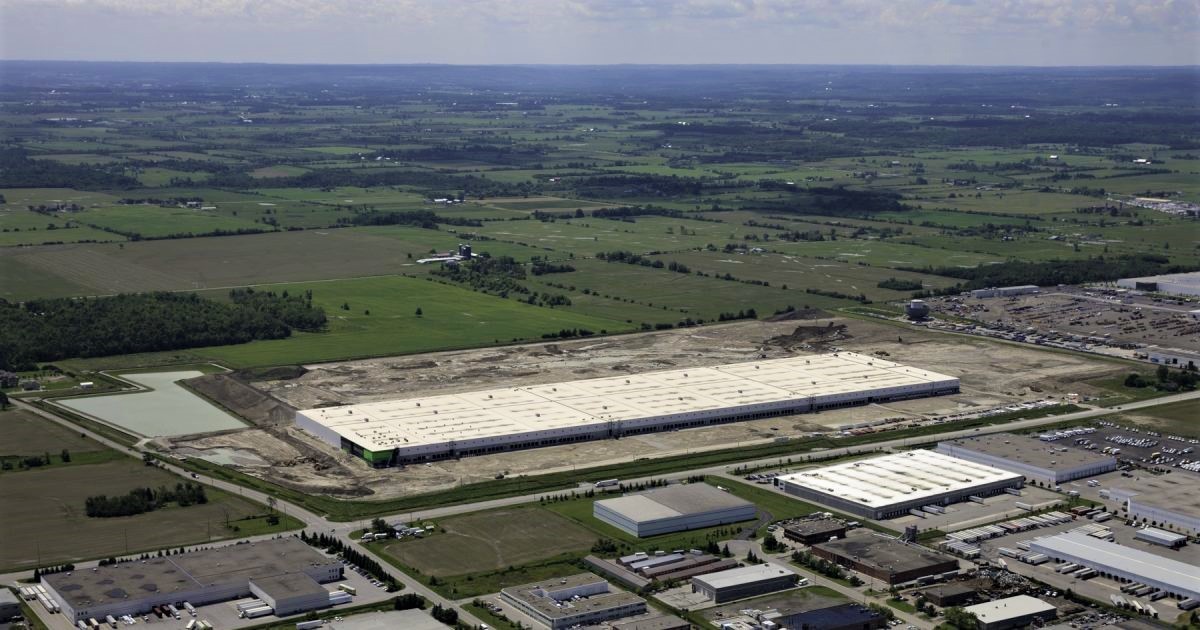
The massive Canadian Tire distribution warehouse in southwest Bolton is what the GTA West Highway will attract
Orlando Corporation would like nothing more. It is just one example of the GTA West’s supporters, but it's particularly notable for its outsized influence over local decision makers, evidenced by the support its presentations garner around the council table.
Without the highway, Peel will be forced to think outside the box. Land use could be dynamically linked to job creation, which Brampton and Caledon desperately need, and would not fall back on a process that has failed residents forced to commute elsewhere for work.
The developers who own the land along the highway corridor will cash in dearly by slapping up valuable subdivision housing throughout the stretch of Peel.
Private interests such as those motivating Orlando’s support represent the type of city building Mississauga has already moved away from.
Which future will the rest of Peel choose?
Email: [email protected]
Twitter: @isaaccallan
Tel: 647 561-4879
COVID-19 is impacting all Canadians. At a time when vital public information is needed by everyone, The Pointer has taken down our paywall on all stories relating to the pandemic and those of public interest to ensure every resident of Brampton and Mississauga has access to the facts. For those who are able, we encourage you to consider a subscription. This will help us report on important public interest issues the community needs to know about now more than ever. You can register for a 30-day free trial HERE. Thereafter, The Pointer will charge $10 a month and you can cancel any time right on the website. Thank you.
Submit a correction about this story


